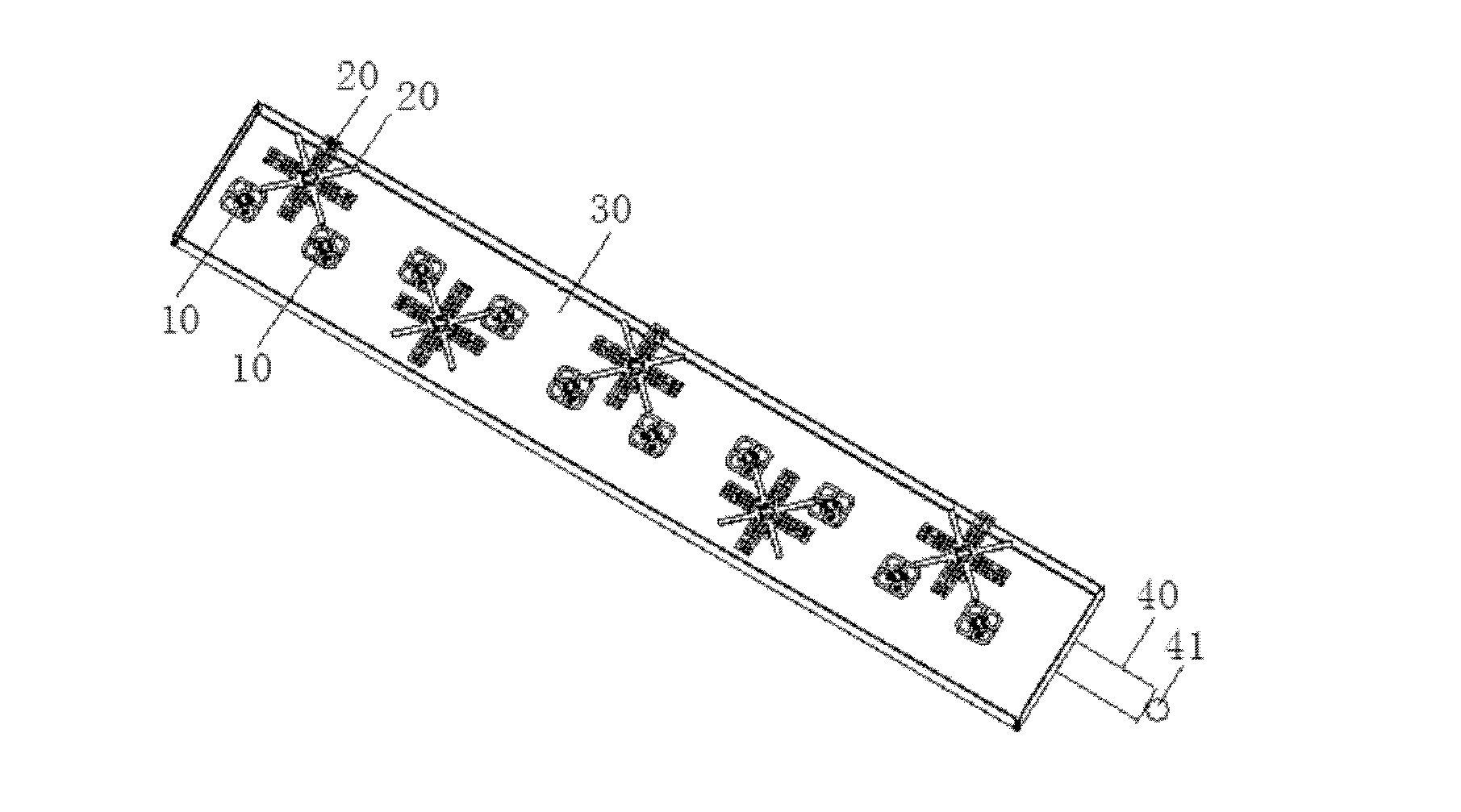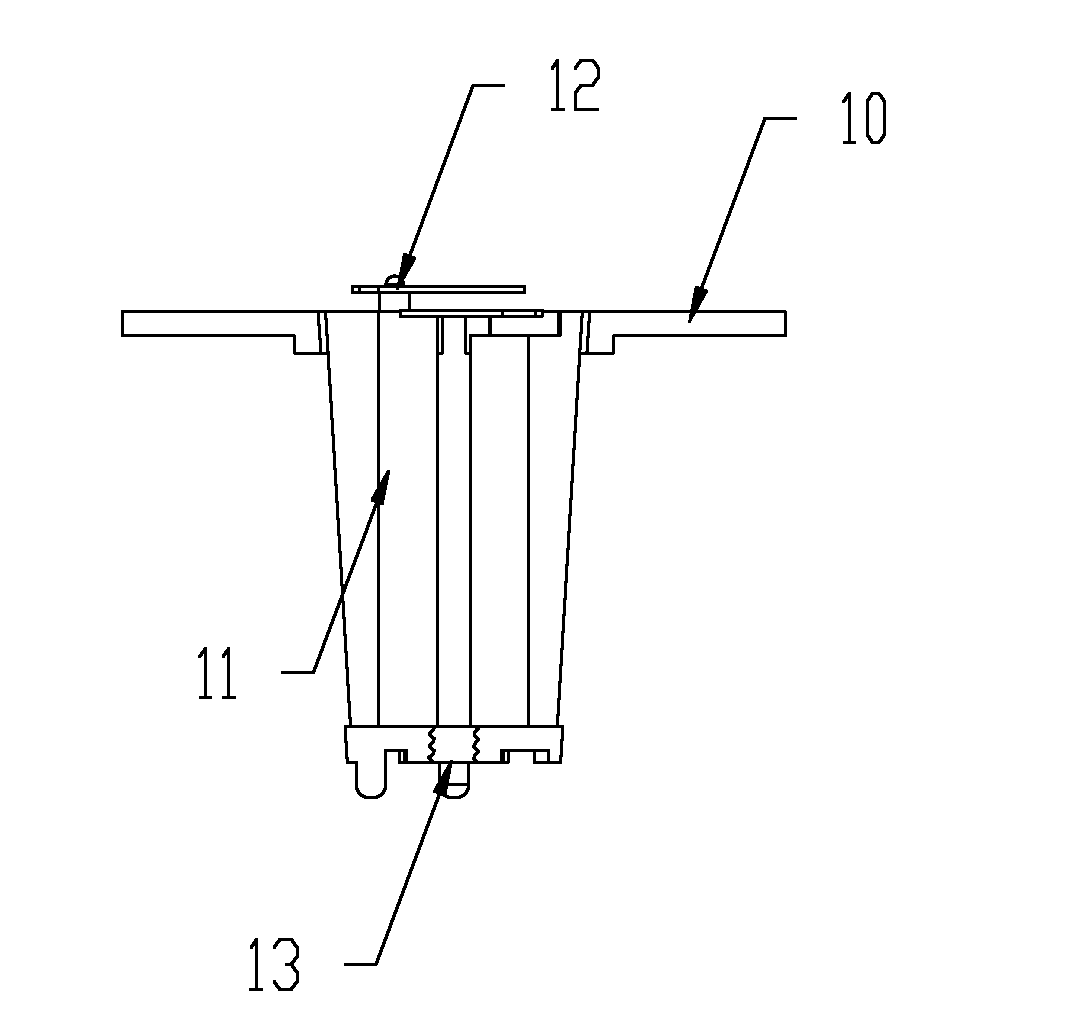Planar double-helix array of double-frequency dual-polarization base-station antenna
A base station antenna, dual-polarization technology, applied in the field of planar double helix arrays, can solve the problems of large mutual influence, deterioration of high-frequency pattern, width of reflector, etc., to achieve the effect of improving distance and improving space utilization.
- Summary
- Abstract
- Description
- Claims
- Application Information
AI Technical Summary
Problems solved by technology
Method used
Image
Examples
Embodiment Construction
[0032] Further illustrate below in conjunction with accompanying drawing and embodiment:
[0033] 1. Overall
[0034] Such as figure 1 , the present invention includes a high-frequency basic oscillator 10, a low-frequency basic oscillator 20, a reflector 30 and a feed network 40;
[0035] The high-frequency basic oscillator 10 and the low-frequency basic oscillator 20 are arranged on the front of the reflector 30, and the feed network 40 is arranged on the back of the reflector 10;
[0036] The high-frequency basic oscillators 10 are alternately shifted left and right in pairs to form a high-frequency radiation array, and the coaxial line 41 in the feed network 40 feeds the high-frequency basic oscillators 10, wherein the outer conductor of the coaxial line 41 is connected to the high-frequency basic oscillator On the high-frequency connection groove 11 of 10, the core wire of the coaxial line 41 is connected to the high-frequency connection piece 12 on the top of the high-f...
PUM
 Login to View More
Login to View More Abstract
Description
Claims
Application Information
 Login to View More
Login to View More - R&D
- Intellectual Property
- Life Sciences
- Materials
- Tech Scout
- Unparalleled Data Quality
- Higher Quality Content
- 60% Fewer Hallucinations
Browse by: Latest US Patents, China's latest patents, Technical Efficacy Thesaurus, Application Domain, Technology Topic, Popular Technical Reports.
© 2025 PatSnap. All rights reserved.Legal|Privacy policy|Modern Slavery Act Transparency Statement|Sitemap|About US| Contact US: help@patsnap.com



